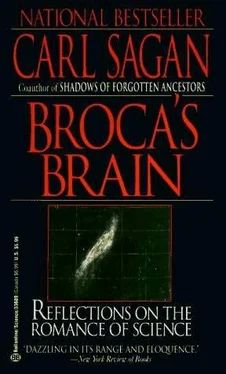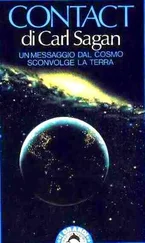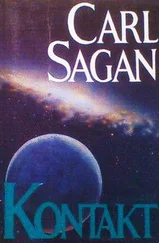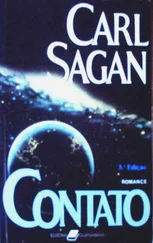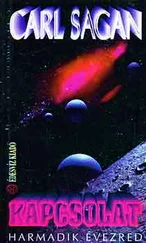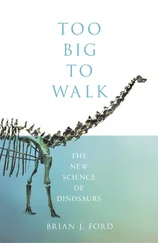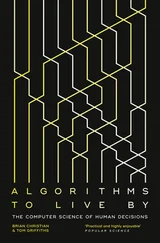Carl Sagan - Broca's Brain - The Romance of Science
Здесь есть возможность читать онлайн «Carl Sagan - Broca's Brain - The Romance of Science» весь текст электронной книги совершенно бесплатно (целиком полную версию без сокращений). В некоторых случаях можно слушать аудио, скачать через торрент в формате fb2 и присутствует краткое содержание. Жанр: Физика, на английском языке. Описание произведения, (предисловие) а так же отзывы посетителей доступны на портале библиотеки ЛибКат.
- Название:Broca's Brain: The Romance of Science
- Автор:
- Жанр:
- Год:неизвестен
- ISBN:нет данных
- Рейтинг книги:3 / 5. Голосов: 1
-
Избранное:Добавить в избранное
- Отзывы:
-
Ваша оценка:
- 60
- 1
- 2
- 3
- 4
- 5
Broca's Brain: The Romance of Science: краткое содержание, описание и аннотация
Предлагаем к чтению аннотацию, описание, краткое содержание или предисловие (зависит от того, что написал сам автор книги «Broca's Brain: The Romance of Science»). Если вы не нашли необходимую информацию о книге — напишите в комментариях, мы постараемся отыскать её.
Broca's Brain: The Romance of Science — читать онлайн бесплатно полную книгу (весь текст) целиком
Ниже представлен текст книги, разбитый по страницам. Система сохранения места последней прочитанной страницы, позволяет с удобством читать онлайн бесплатно книгу «Broca's Brain: The Romance of Science», без необходимости каждый раз заново искать на чём Вы остановились. Поставьте закладку, и сможете в любой момент перейти на страницу, на которой закончили чтение.
Интервал:
Закладка:
When we examine the full body of Dogon mythology we find a very rich and detailed structure of legend-much richer, as many anthropologists have remarked, than those of their near geographical neighbors. Where there is a rich array of legends there is, of course, a greater chance of an accidental correspondence of one of the myths with a finding of modern science. A very spare mythology is much less likely to make such an accidental concordance. But when we examine the rest of Dogon mythology, do we find other cases hauntingly reminiscent of some unexpected findings in modern science?
The Dogon cosmogony describes how the Creator examined a plaited basket, round at the mouth and square at the bottom. Such baskets are still in use in Mali today. The Creator up-ended the basket and used it as a model for the creation of the world-the square base represents the sky and the round mouth the Sun. I must say that this account does not strike me as a remarkable anticipation of modern cosmological thinking. In the Dogon representation of the creation of the Earth, the Creator implants in an egg two pairs of twins, each pair comprised of a male and a female. The twins are intended to mature within the egg and fuse to become a single and “perfect” androgynous being. The Earth originates when one of the twins breaks from the egg before maturation, whereupon the Creator sacrifices the other twin in order to maintain a certain cosmic harmony. This is a variegated and interesting mythology, but it does not seem to be qualitatively different from many of the other mythologies and religions of humanity.
The hypothesis of a companion star to Sirius might have followed naturally from the Dogon mythology, in which twins play a central role, but there does not seem to be any explanation this simple about the period and density of the companion of Sirius. The Dogon Sirius myth is too close to modern astronomical thinking and too precise quantitatively to be attributed to chance. Yet there it sits, immersed in a body of more or less standard prescientific legend. What can the explanation be? Is there any chance that the Dogon or their cultural ancestors might actually have been able to see Sirius B and observe its period around Sirius A?
White dwarfs such as Sirius B evolve from stars called red giants, which are very luminous and, it will be no surprise to hear, red. Ancient writers of the first few centuries A.D. actually described Sirius as red-certainly not its color today. In a conversation piece by Horace called “Hoc Quoque Tiresia” (How to Get Rich Quickly) there is a quotation from an unspecified earlier work that says: “The red dog star’s heat split the speechless statues.” As a result of these less than compelling ancient sources there has been a slight temptation among astrophysicists to consider the possibility that the white dwarf Sirius B was a red giant in historical times and visible with the naked eye, completely swamping the light of Sirius A. In that case perhaps there was a slightly later time in the evolution of Sirius B when its brightness was comparable to that of Sirius A, and the relative motion of the two stars about each other could be discerned with the unaided eye. But the best recent information from the theory of stellar evolution suggests that there simply is not enough time for Sirius B to have reached its present white dwarf state if it had been a red giant a few centuries before Horace. What is more, it would seem extraordinary that no one except the Dogon noticed these two stars circling each other every fifty years, each alone being one of the brightest stars in the sky. There was an extremely competent school of observational astronomers in Mesopotamia and in Alexandria in the preceding centuries-to say nothing of the Chinese and Korean astronomical schools-and it would be astonishing if they had noticed nothing. [4]Is our only alternative, then, to believe that representatives of an extraterrestrial civilization have visited the Dogon or their ancestors?
The Dogon have knowledge impossible to acquire without the telescope. The straightforward conclusion is that they had contact with an advanced technical civilization. The only question is, which civilization-extraterrestrial or European? Far more credible than an ancient extraterrestrial educational foray among the Dogon might be a comparatively recent contact with scientifically literate Europeans who conveyed to the Dogon the remarkable European myth of Sirius and its white dwarf companion, a myth that has all the superficial earmarks of a splendidly inventive tall story. Perhaps the Western contact came from a European visitor to Africa, or from the local French schools, or perhaps from contacts in Europe by West Africans inducted to fight for the French in World War I.
The likelihood that these stories arise from contact with Europeans rather than extraterrestrials has been increased by a recent astronomical finding: a Cornell University research team led by James Elliot, employing a high-altitude airborne observatory over the Indian Ocean, discovered in 1977 that the planet Uranus is surrounded by rings-a finding never hinted at by ground-based observations. Advanced extraterrestrial beings viewing our solar system upon approach to Earth would have little difficulty discovering the rings of Uranus. But European astronomers in the nineteenth and early twentieth centuries would have had nothing to say in this regard. The fact that the Dogon do not talk of another planet beyond Saturn with rings suggests to me that their informants were European, not extraterrestrial.
In 1844 the German astronomer F. W. Bessel discovered that the long-term motion of Sirius itself (Sirius A) was not straight but, rather, wavy against the background of more distant stars. Bessel proposed that there was a dark companion to Sirius whose gravitational influence was producing the observed sinusoidal motion. Since the period of the wiggle was fifty years, Bessel deduced that the dark companion had a fifty-year period in the joint motion of Sirius A and B about their common center of mass.
Eighteen years later Alvan G. Clark, during the testing of a new 18½-inch refracting telescope, accidentally discovered the companion, Sirius B, by direct visual observation. From the relative motions, Newtonian gravitational theory permits us to estimate the masses of Sirius A and B. The companion turns out to have a mass just about the same as the Sun’s. But Sirius B is almost ten thousand times fainter than Sirius A, even though their masses are about the same and they are just the same distance from the Earth. These facts can be reconciled only if Sirius B has a much smaller radius or a much lower temperature. But in the late nineteenth century it was believed by astronomers that stars of the same mass had approximately the same temperature, and by the turn of the century it was widely held that the temperature of Sirius B was not remarkably low. Spectroscopic observations by Walter S. Adams in 1915 confirmed this contention. Hence, Sirius B must be very small. We know today that it is only as big as the Earth. Because of its size and color it is called a white dwarf. But if Sirius B is much smaller than Sirius A, its density must be very much greater. Accordingly, the concept of Sirius B as an extremely dense star was widely held in the first few decades of this century.
The peculiar nature of the companion of Sirius was extensively reported in books and in the press. For example, in Sir Arthur Stanley Eddington’s book The Nature of the Physical World , we read: “Astronomical evidence seems to leave practically no doubt that in the so-called white dwarf stars the density of matter far transcends anything of which we have terrestrial experience; in the Companion of Sirius, for example, the density is about a ton to the cubic inch. This condition is explained by the fact that the high temperature and correspondingly intense agitation of the material breaks up (ionises) the outer electron system of the atoms, so that the fragments can be packed much more closely together.” Within a year of its 1928 publication, this book saw ten reprintings in English. It was translated into many languages, including French. The idea that white dwarfs were made of electron degenerate matter had been proposed by R. H. Fowler in 1925 and quickly accepted. On the other hand, the proposal that white dwarfs were made of “relativistically degenerate” matter was first made in the period 1934 to 1937, in Great Britain, by the Indian astrophysicist S. Chandrasekhar; the idea was greeted with substantial skepticism by astronomers who had not grown up with quantum mechanics. One of the most vigorous skeptics was Eddington. The debate was covered in the scientific press and was accessible to the intelligent layman. All this was occurring just before Griaule encountered the Dogon Sirius legend.
Читать дальшеИнтервал:
Закладка:
Похожие книги на «Broca's Brain: The Romance of Science»
Представляем Вашему вниманию похожие книги на «Broca's Brain: The Romance of Science» списком для выбора. Мы отобрали схожую по названию и смыслу литературу в надежде предоставить читателям больше вариантов отыскать новые, интересные, ещё непрочитанные произведения.
Обсуждение, отзывы о книге «Broca's Brain: The Romance of Science» и просто собственные мнения читателей. Оставьте ваши комментарии, напишите, что Вы думаете о произведении, его смысле или главных героях. Укажите что конкретно понравилось, а что нет, и почему Вы так считаете.
